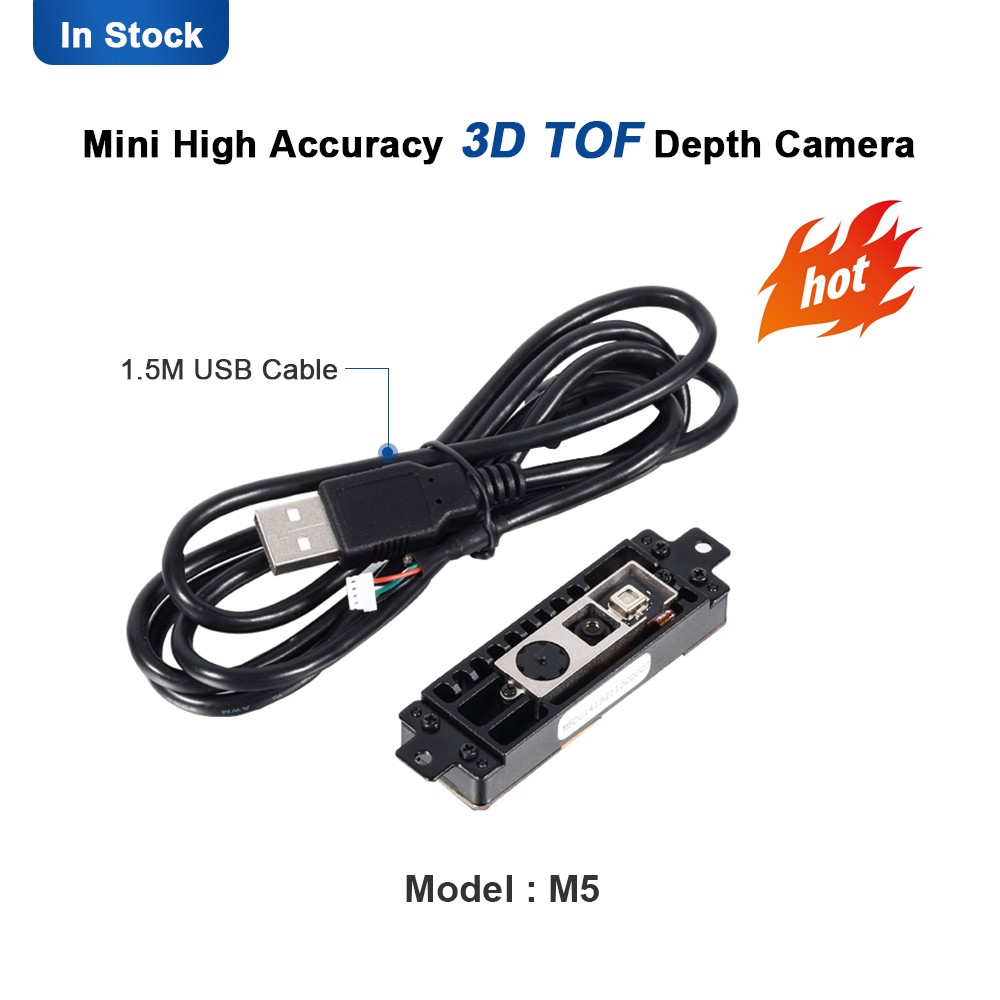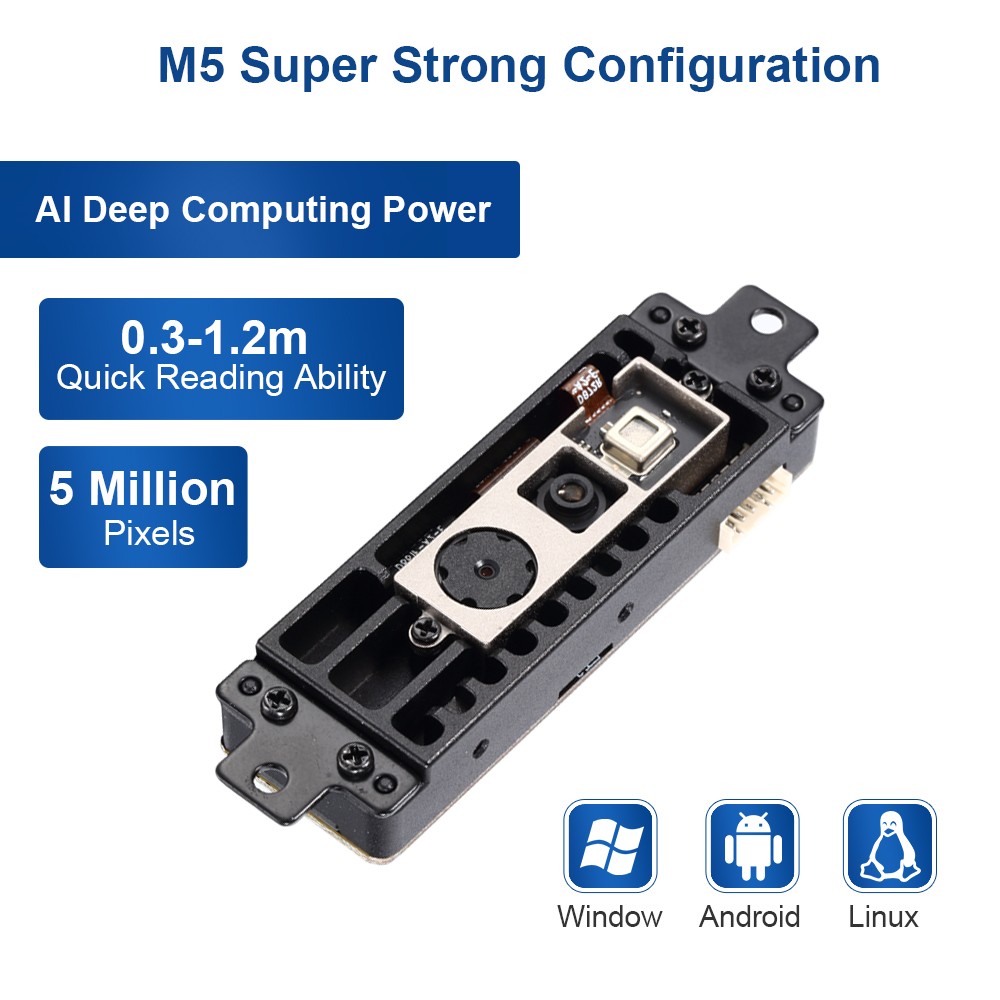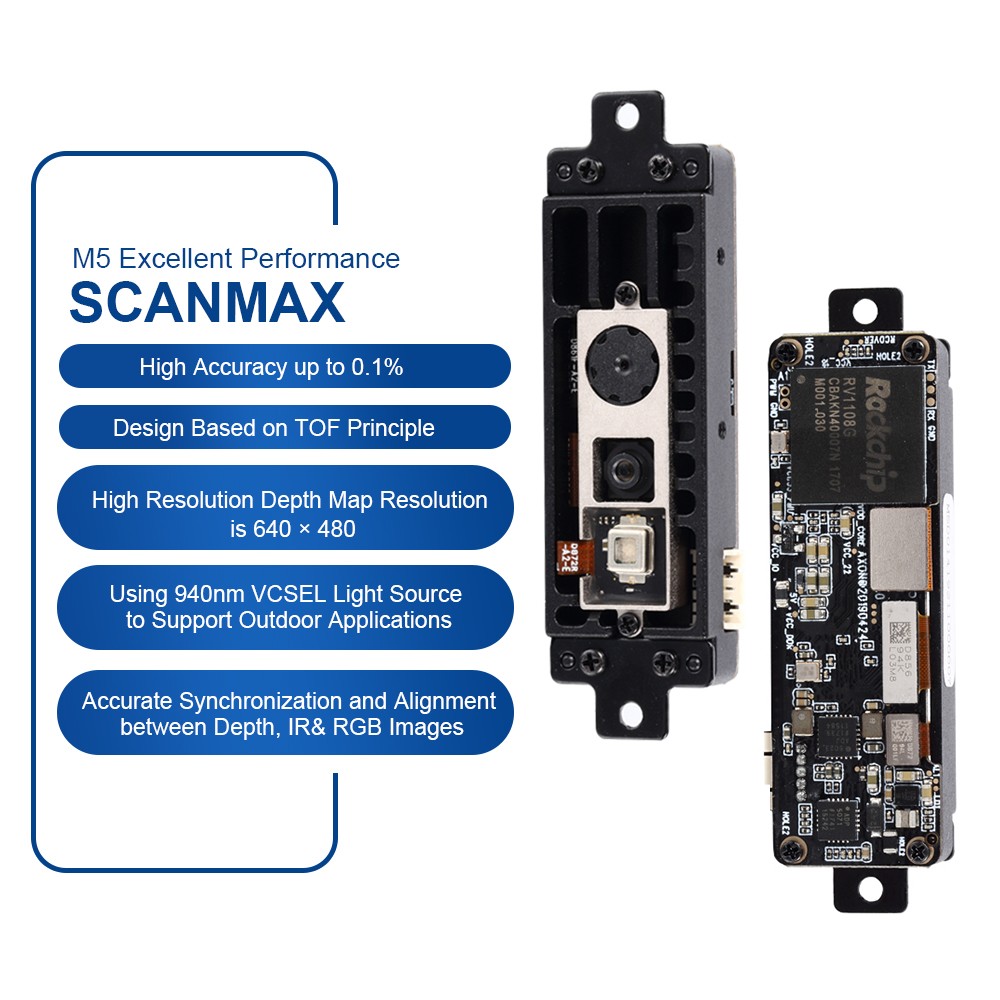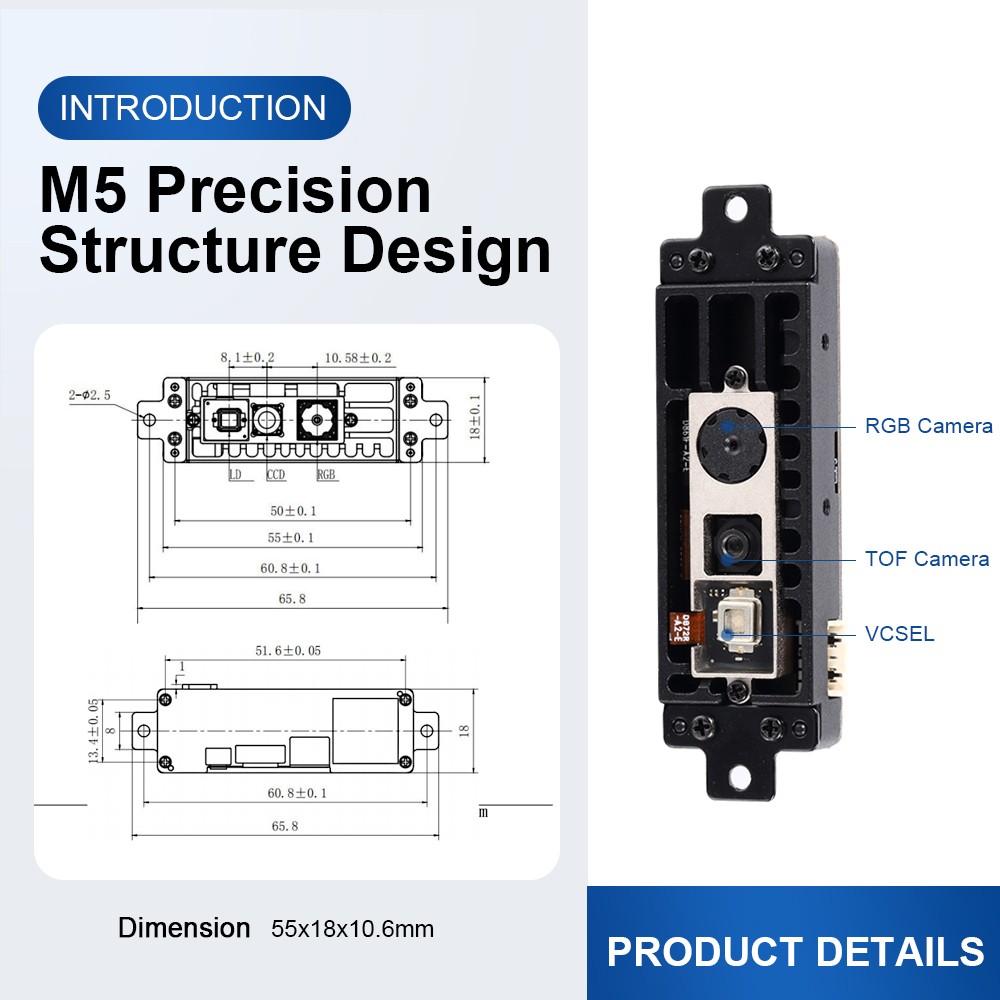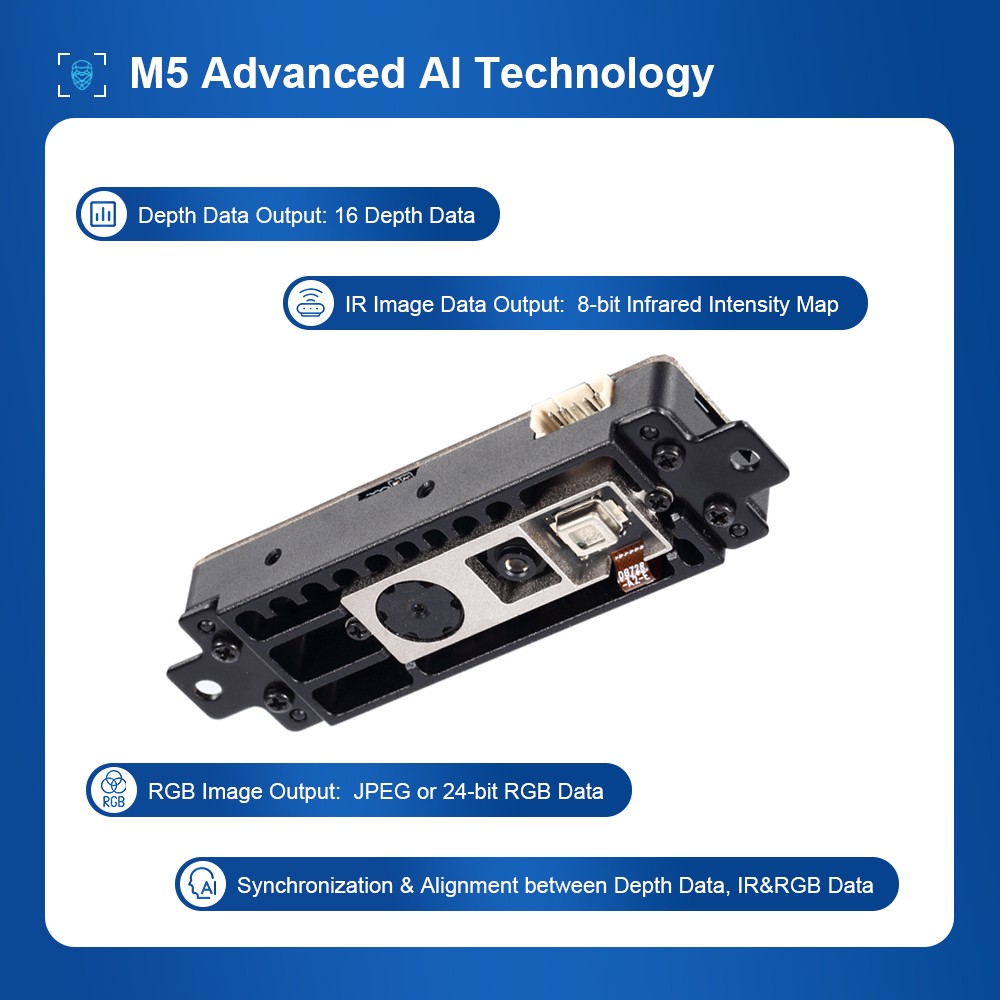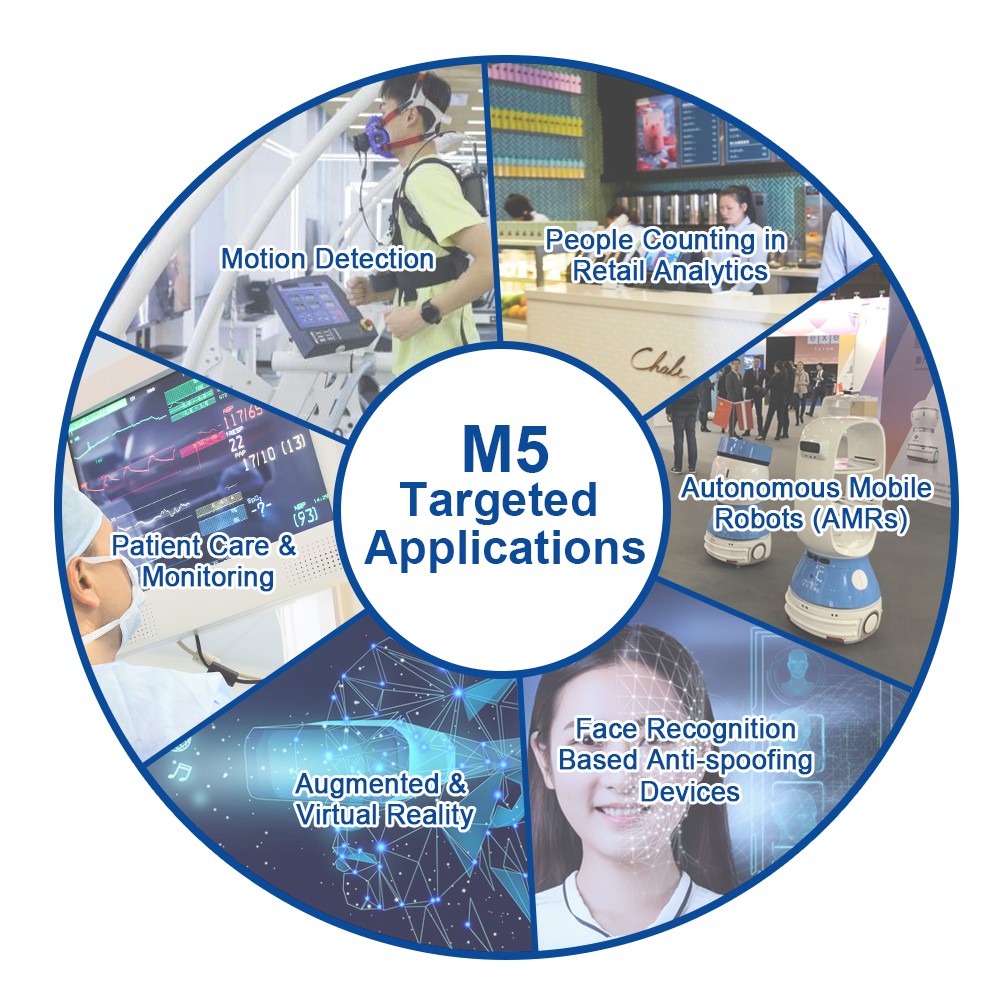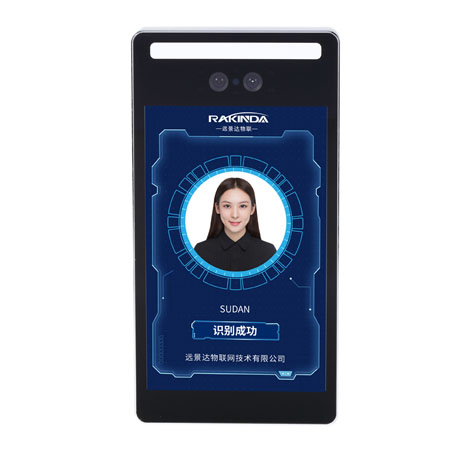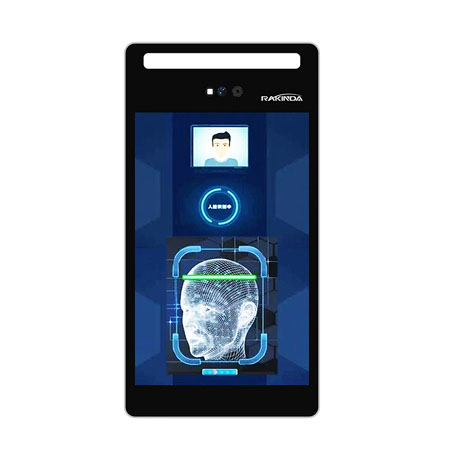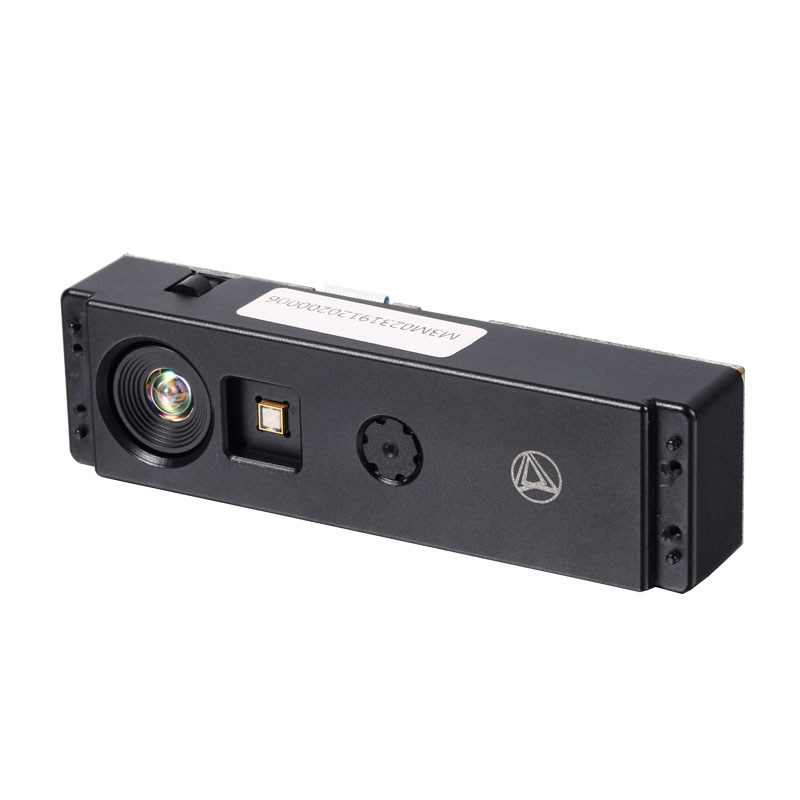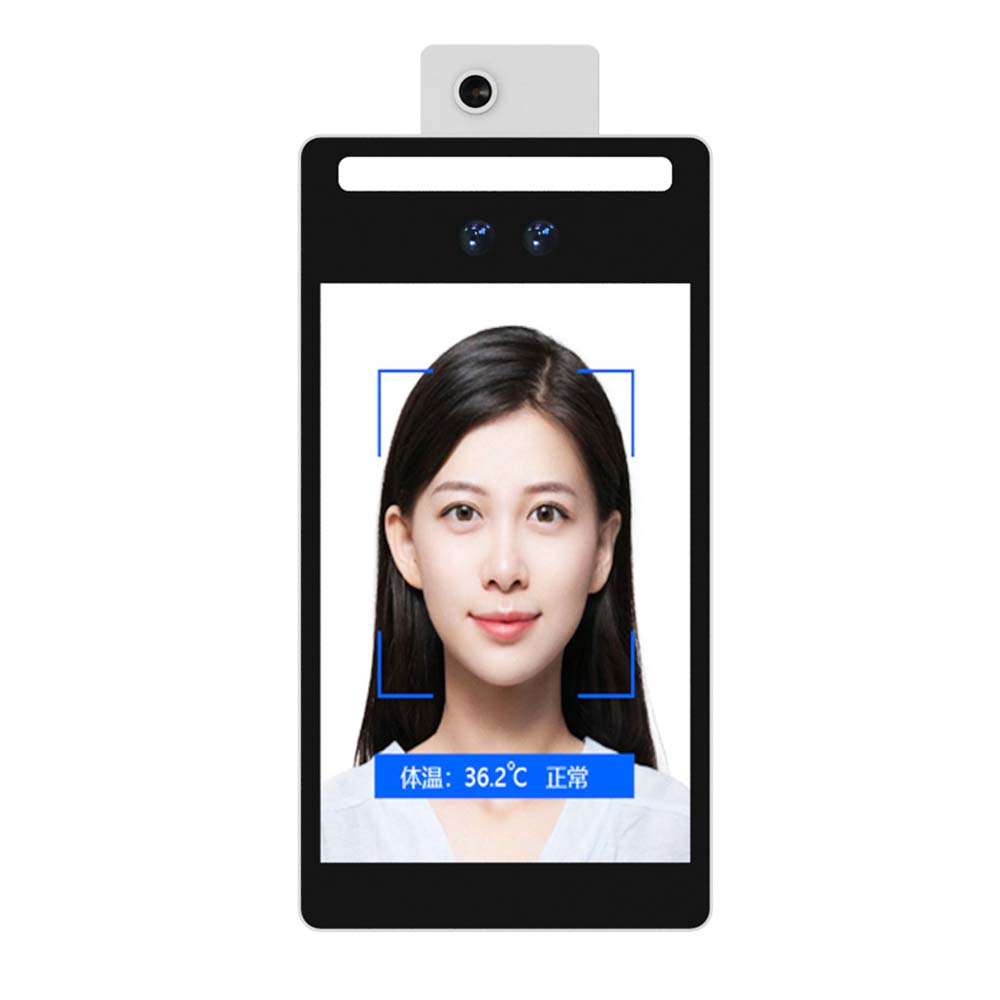Product Description
Scanmax RGBD-M5 is a Time of Flight camera designed for precise 3D depth Measurement. miniaturized RGB-D Camera with 640 * 480 pixel ToF depth sensor and 5 million pixel RGB camera, It can be easily applied to terminal modules to easily realize 3D modeling, Face recognition, living body detection, scene recognition, also be used in VR/AR gesture interaction, security monitoring, new retail and other fields.
The miniaturized and ultra-thin size structure is suitable for various embedded and handheld detection terminals, and realizes functions such as face recognition, living body detection, scene recognition, and gestures. The product provides a complete SDK, and users can perform device integration and secondary development according to their own needs.
<img width="600" height="450" _url="
Product Features:
1.High precision-more than 99.9% recognition accuracy
2.Super fast recognition speed by facial scanning
3.Flexible&multiple scenarios in many files
4.3D TOF living detection with efficient & stable performance
5.High resolution, depth map resolution is 640 × 480;
6. Illumination: Using 940nm VCSEL light source to support indoor and outdoor applications;
7.Miniaturized and ultra-thin design, the appearance size is 55mm × 18mm × 10.6mm, suitable for various embedded applications;
8.Accurate synchronization and alignment between depth, IR and RGB images.
9. 3D camera technology: Time of Flight
10. Depth range: Upto 6m
The Main Components Of The Product Hardware
⚫A TOF camera module;
⚫A VCSEL laser;
⚫One RGB camera module
⚫A dedicated ASIC processing chip;
⚫A control motherboard (including CPU, FLASH, etc.);Camera module.
Data output:
1. Depth data: output uint16 depth data;
2. IR image data: output 8bit infrared intensity map;
3. RGB image: output JPEG or 24-bit RGB data;
4. Synchronization and alignment between depth data, IR and RGB data
Applications:
RGB-D Camera, 3D TOF depth camera RGBD-M5 applications
RAKINDA M5 product can be widely used in various types of deep vision detection scenarios, mainly including:
Autonomous Mobile Robots (AMRs)
Patient care / Patient Monitoring
Autonomous Guided Vehicles (AGVs)
Face Recognition Based Anti-spoofing Devices
People Counting in Retail Analytics
Industry | Application |
Somatosensory entertainment | Somatosensory games, bone extraction, 3D fitting, gesture recognition, etc. |
Face Recognition | Face payment, face access control, witness integrated machine, etc. |
Robot | Obstacle Avoiding Robot |
| FOV Measurement range, People Counting, 3D Modeling |
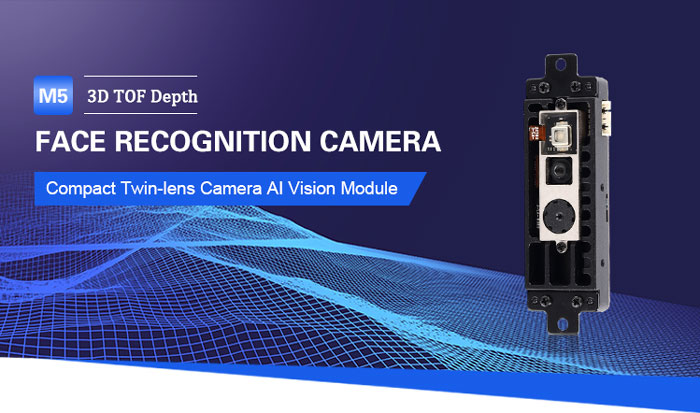
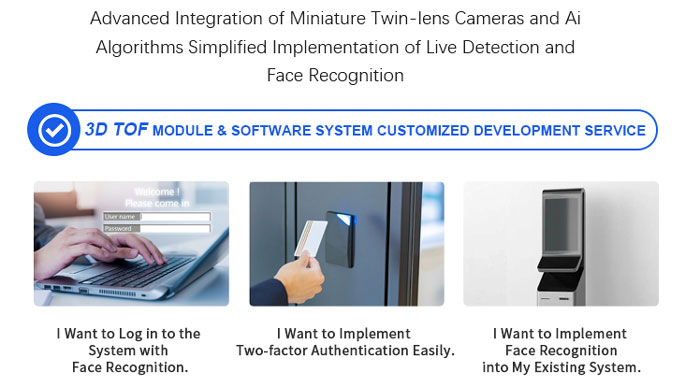
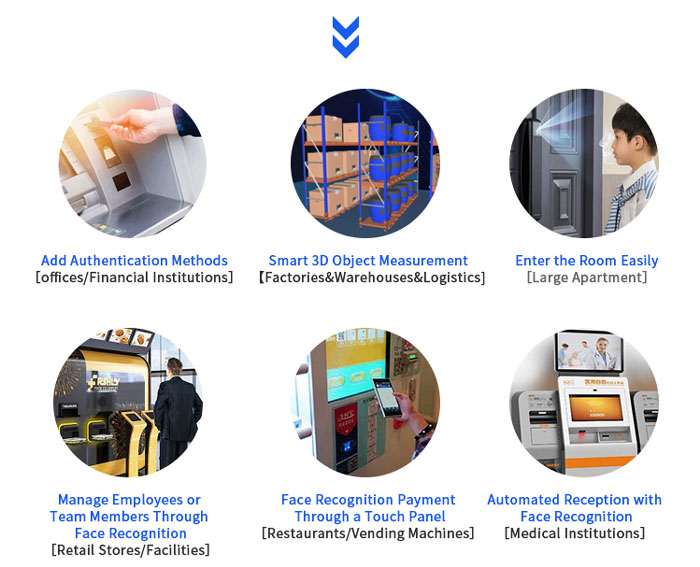
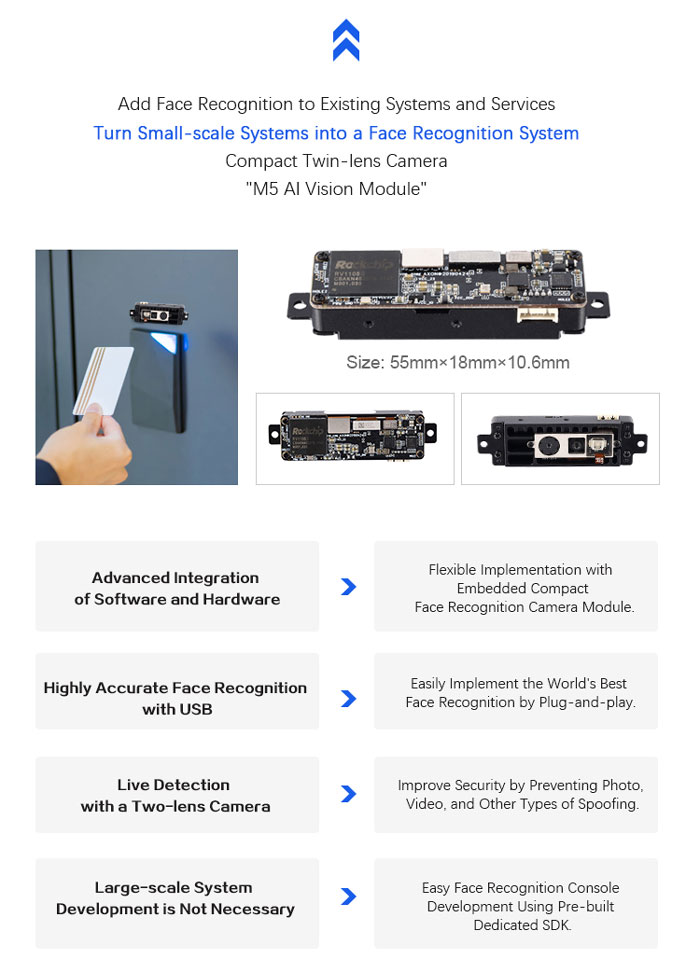
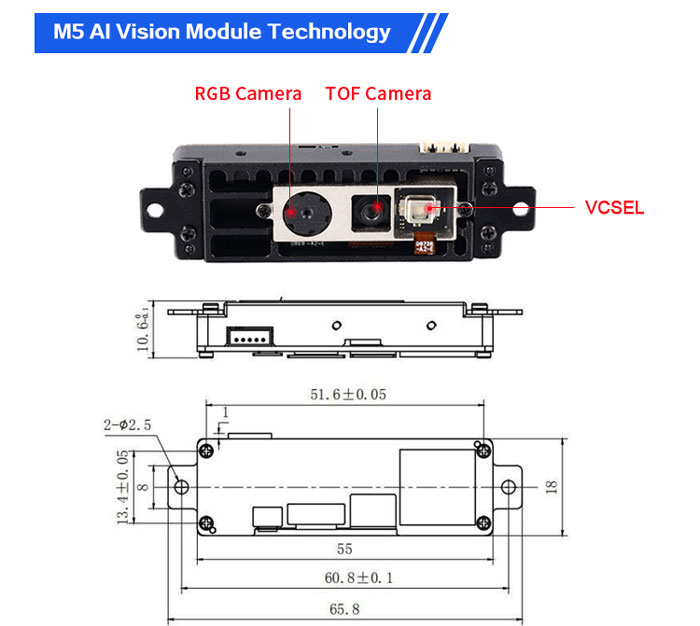
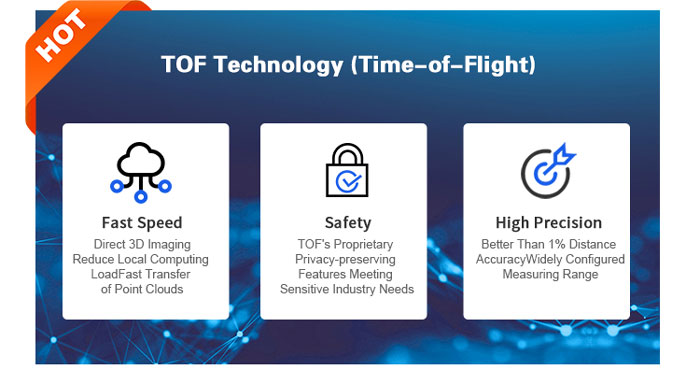

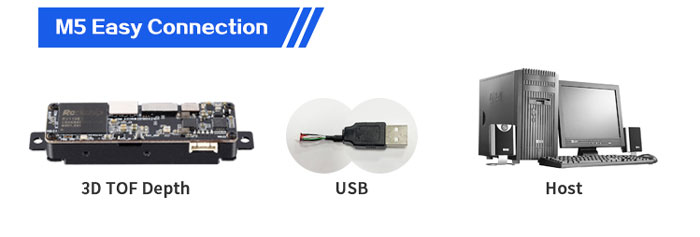
Parameter | Specifications | |
Model | RAKINDA M5 | |
TOF (Time of Flight) | Resolution (horizontal x vertical) | 640×480 |
Field of view (horizontal and vertical) | 60°× 45° | |
Frame Rate (fps) | Maximum 30 | |
RGB | Resolution (horizontal x vertical) | Support 1080P/960P/720P/VGA |
Field of view (horizontal and vertical) | 74°× 56° @960P(Default) 63°× 37° @1080P 74°× 42°@720P 74°× 56°@VGA | |
Frame Rate (fps) | Maximum 30 | |
Video Coding | JPEG、RGB | |
Detection range(unit:m)注 1 | 0.3 - 1.2 | |
Measurement accuracy注 2 | 0.1% | |
Measurement accuracy注 3 | 1% | |
Light source | 940nm VCSEL | |
Data transmission interface | Micro USB | |
Power supply | 5V | |
Typical power consumption(W) | 3.4 | |
Operating temperature(℃) | 0-45 | |
Operating system | Windows7 and above、Linux、Android | |
Structure size (length × height × depth, single Bit: mm) | 55×18×10.6(Module without mounting steel) 65.8×18×10.6( Module without mounting steel) | |
Note 1: Measurement distance: For white wall test with 90% reflectivity, the detection distance in the center area; reflectance has an impact on measurement distance, accuracy and accuracy.
Note 2: Measurement accuracy: For the white wall test with 90% reflectance, the root mean square error of the repeated test in the center area.
Note 3: Measurement accuracy: for the white wall test with 90% reflectivity, the error between the measurement distance and the true distance.
Note 4: If the board-level power supply USB port 5V power current is greater than 1A, the power can be directly supplied through the USB port; if the current is less than 1A, power is supplied through the dedicated accessory cable.
Note 5: The module form and embedded design must be used with the whole machine for heat dissipation design; refer to the design guide or contact the manufacturer for heat dissipation scheme.

